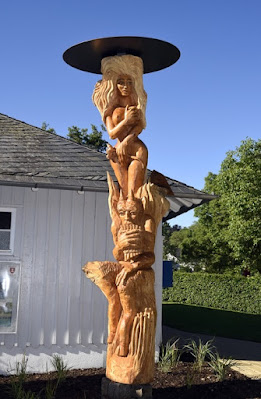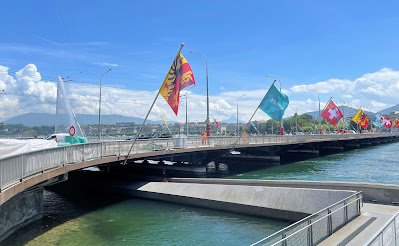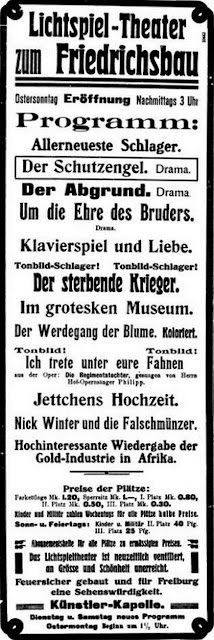The German national old age statuary pension (Gesetzliche Rentenversicherung) is in the news from time to time. Germany's tabloid Bild titled "Horrible Ruin of the Pension System."
The statuary pension dates back to the Second Reich and Chancellor Otto von Bismarck. During the industrial revolution, workers streamed into the big cities, lived in cramped rental housing, led a hand-to-mouth existence, and, suffering their social standing, massively joined the Social Democrats. In 1878 Bismarck's Law against efforts of the Social Democrats that are dangerous to the public outlawed the party. However, workers continued their agitation and successfully stood for elections as private candidates.
Bismarck, the Realpolitiker (political realist), saw that social improvements for the working proletariat were necessary to take the wind out of the socialists' sails. He convinced Kaiser Wilhelm to send an Imperial Message to the Reichstag (parliament) on November 17, 1881: The legislature shall pass laws covering the workers financially in medical treatment cases, workplace accidents, invalidity, and old age.
The system financed by contributions from employers and employees during their working life, i.e., up to 65 years (nowadays 67), survived two world wars, two inflations, and numerous financial crises.

|
| Nobi gluing posters (©dpa) |
In the article Die wahre Rentenlüge (The absolute lie about the pension), Sven Böll takes on doomsday scenarios mainly spread by the Bild-Zeitung.
Naturally, a system that pays out more than 300 billion euros per year to more than 20 million pensioners has its faults. And the problems of the scheme will not become smaller given the foreseeable demographic development.
But what is true, too, is that the statutory pension has proven astonishingly robust over the past decades. The rate of contribution has remained remarkedly
stable.
A lot has happened since Blüm's promise, e.g., following German reunification, many people in the former German Democratic Republic received, and some still receive, benefits from the Federal Republic's statutory pension insurance system, into which they never paid directly or only relatively briefly.
Pensions were paid out - regardless of whether unemployment rose (which was the case for a long time) or stock market prices fell (which happened several times).
The doomsday messages spread are always the same. We will all have to work much longer and pay much more into the statuary pension, yet that's nothing like enough. Everything is very, very, very terrible. This is the absolute pension lie.
Forecasts are known to be particularly difficult when they concern the future. Sometimes it helps to look back: Which part of the way have we already traveled? And what was predicted in the past for the present?
At the beginning of the 1960s, every pensioner still had six working contributors. That there are now only about two means that the system has already adapted to an enormous demographic development.
A lot has happened since Blüm's promise, e.g., following German reunification, many people in the former German Democratic Republic received, and some still receive, benefits from the Federal Republic's statutory pension insurance system, into which they never paid directly or only relatively briefly.
Pensions were paid out - regardless of whether unemployment rose (which was the case for a long time) or stock market prices fell (which happened several times).
The doomsday messages spread are always the same. We will all have to work much longer and pay much more into the statuary pension, yet that's nothing like enough. Everything is very, very, very terrible. This is the absolute pension lie.
Forecasts are known to be particularly difficult when they concern the future. Sometimes it helps to look back: Which part of the way have we already traveled? And what was predicted in the past for the present?
At the beginning of the 1960s, every pensioner still had six working contributors. That there are now only about two means that the system has already adapted to an enormous demographic development.
Will the contributions to finance the statuary pensions rise? Here too, pessimistic predictions from the early days of Angela Merkel's chancellorship brightened. Every year, the government publishes a pension insurance report. Not to frighten the voter, the data are always tuned positively than too negatively. In 2006, the government predicted a contribution rate of up to 20.7% for 2020. Even in their optimistic scenario, it should be 19.6%. It is actually at 18.6%.
The best way to avoid the depletion of the national pension fund is the acquisition of fresh contributions. The most important lesson learned from the surprisingly positive development is a booming labor market and a sound economic policy.

|
|
The number of workers subject to statuary contributions increased,
while the number of those privately insured for their pension, and thus exempt declined. Note the dip in the Corona year 2020. |
The most promising way to stabilize pensions is to
slow down the foreseeable decline in the number of working people, e.g.,
through higher labor force participation of women and more qualified
immigration. The more consistently this policy is pursued, the less it will be
necessary to tighten the other screws of the system, i.e., later pension start
date, lower pension level, higher contribution rate, and more money from the
federal budget.
*





























